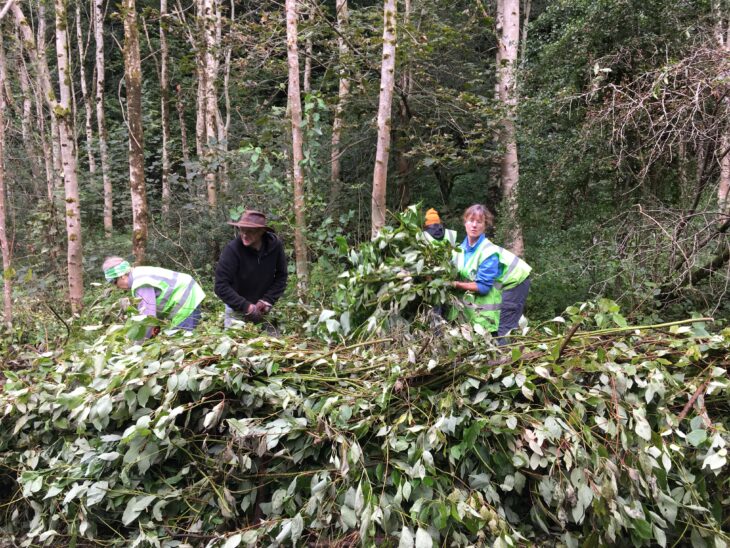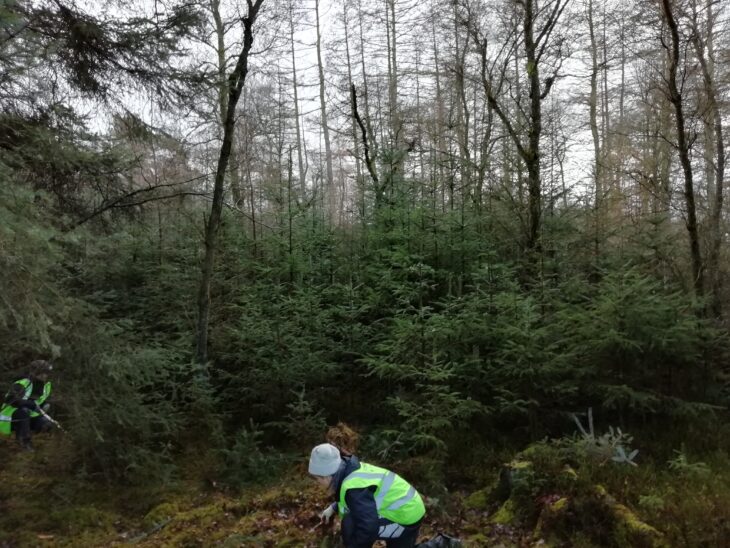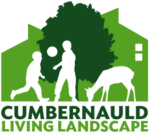Tackling the invaders
We have a number of invasive species in Cumbernauld, including Japanese knotweed, Himalayan balsam, snowberry, rhododendron, and potentially, Spanish bluebell. The presence and spread of these species pose significant threats to the health and sustainability of our local wildlife, and coordinated action is needed to ensure we can achieve this.
The Tackling the Invaders project included developing a strategy to control invasive species in Cumbernauld, undertaking survey work to identify where the problem areas are now, and liaising with landowners to coordinate actions to control them.
The strategy was produced by Cumbernauld Living Landscape project team, with support from North Lanarkshire Council biodiversity officers. Survey work involved a combination of professional and trained voluntary input, and the project partners used their combined influence to work with other landowners and statutory bodies to coordinate control of these invasive species.
Our Nature Ninja teams enjoyed targeting areas and their work included:
Pulling out Himalayan balsam – volunteers pull this out of the ground, crack the nodules of the plant and leave hanging off the ground to prevent it re-rooting or seeding.

- Cutting down dogwood and weaving the cut branches into habitat piles raised off ground.
-
The Nature Ninjas cut self-seeded spruce trees and snowberry as low to the ground as possible, pulling out roots wherever they can, and leave them in chopped up habitat piles for invertebrates and small animals to use.

Invasive species – the facts
Did you know that…
- The estimated total annual costs of invasive species to Scotland is more than £250 million?
- Giant hogweed leaves, which contain skin-burning sap, can grow up to 1m wide?
- Predation by the invasive American mink was one of the main factors in the staggering 94% decline in native water vole populations?
- The American skunk-cabbage plant does actually smell as bad as a skunk….
What is an invasive species?
There are around 2,000 non-native plants and animals in the UK, these non-native species are species that have been transported here from their native range with the assistance of humans (either deliberately or accidentally). Of these only 10-15% go on to cause problems, having a negative impact on our environment, our economy or our way of life – these are called invasive non-native species.
Why are some non-native species a problem?
Some non-native species are a problem because they thrive in the new environment into which they’ve been introduced and, in doing so, impact on and disrupt the delicate balance of that natural ecosystem. Their impacts can be clearly visible, like the presence of a stand of Japanese knotweed, or less obvious but equally disastrous like the reduction in invertebrate biodiversity in a river when the banks are dominated by Himalayan balsam.
What makes a successful invader?
Most non-native species that go onto become invasive share several characteristics that make them successful in their new environment.
- They lack predators, pathogens or diseases that would normally keep their population numbers in check.
- They reproduce quickly, easily and in abundance eg giant hogweed produces 20-30,000 seeds per flower head.
- They are successful dispersers eg Himalayan balsam has exploding seed pods that spread its seed several metres.
In addition, invasive plants often readily thrive on disturbed soils, which means they are able to rapidly colonise a new area. They are usually fast growing, can be taller with larger leaves than native species and they have a longer photosynthetic period, they are the first out in leaf in the spring and last to die back in autumn. Some invasive plants also alter soil and habitat conditions where they grow to better suit their own survival and expansion.
All or some of these characteristics in combination make successful invasive species formidable opponents to native species – and difficult (and often expensive) to remove or dislodge once established.
What impacts do they have?
The most significant impacts invasive species have are on our natural environment where we see:
- Competition. Invasive species are often better adapted to their new environment, growing faster and out-competing our native species for space and food/nutrients. For example invasive plants out-compete our native wildflowers.
- Predation. A predatory invasive species can have a significant effect on reducing the population of a native species. For example the significant impact on water voles from American mink predation
- Hybridisation. Invasive species can interbreed with native species, diluting the native gene pools. For example non-native Sika deer are interbreeding with our native red deer.
- Habitat alteration. Invasive species can alter invaded habitats. For example where Himalayan balsam forms dense stands on river banks, these die back in the winter leaving bare soil which is prone to erosion, which can contribute to flooding problems.
- Spread of disease. Invasive species can carry pathogens and parasites to which our native wildlife has no or limited resistance. For example the grey squirrel carries the squirrel pox virus, which has no effect on grey squirrels but is fatal to our native red squirrels.
Invasive non-native species are having a significant impact our economy. They are estimated to cost in the region of £2 billion a year in Great Britain. Costs are incurred by the agriculture, forestry and horticulture sectors, but also by many other sectors including transport, construction, aquaculture, recreation and utilities.
Some invasive species threaten our health or enjoyment of our environment. For example giant hogweed contains a phototoxic sap which causes serious skin burns on contact. Invasive plant species growing along river banks can spoil our enjoyment of the countryside, making it less appealing and restricting access for walkers and anglers.
What can I do?
Invasive species are a huge challenge in terms of management and removal – and we need to work together to be effective. The most effective measure is to prevent their introduction in the first place. However, everyone can play a role in this important battle.
- Be Plant Wise! – don’t let any non-native species escape from your garden and don’t dump garden waste in the countryside. This is how many invasive plant species have spread into the wild.
- Practise good biosecurity – make sure if you are walking, mountain biking, angling, kayaking, boating etc. that you “Check, Clean, Dry” all your equipment and footwear between visiting sites. This helps stop the spread of invasive species and diseases.
- Get hands-on and volunteer – there are lots of ways you can practically help; join in a conservation volunteer activity to remove invasive species or undertaken habitat restoration work, adopt a mink monitoring raft or help survey for invasive plants.
- Be aware of the problem species to look out for in the countryside, record your sightings and report what you’ve seen. (If you are not aware of a local contact or specific project to directly report your sightings to, record them via the “iRecord” website or App).
